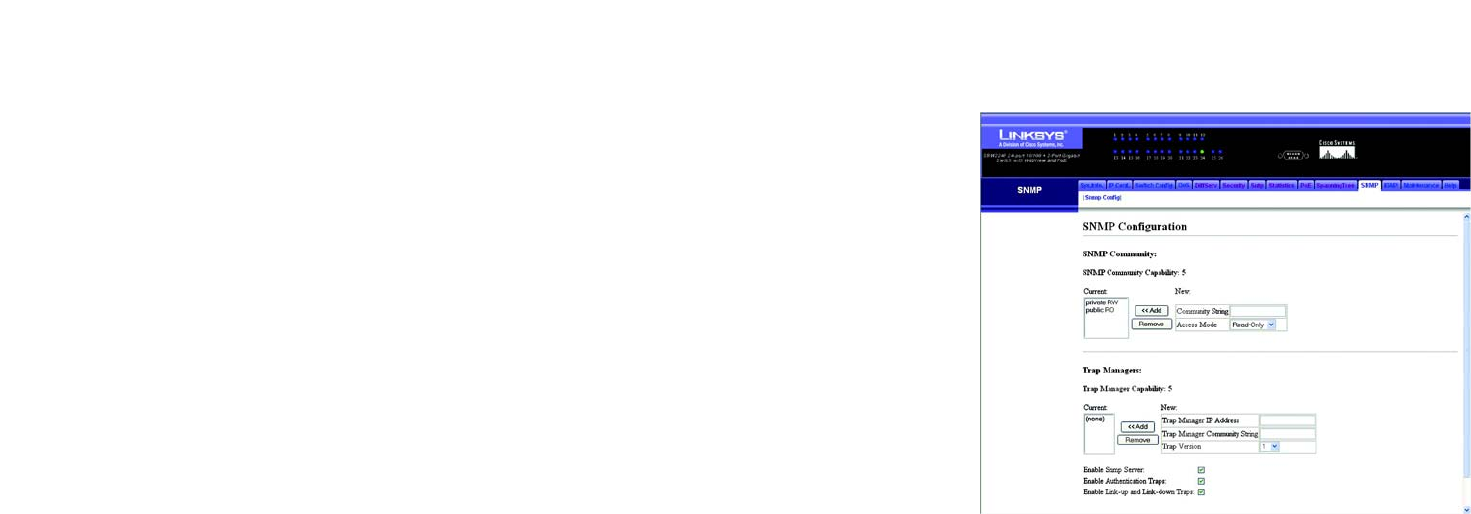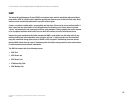
75
Chapter 5: Configuring the Switch through the Web Utility
SNMP
24-Port 10/100 + 2-Port Gigabit Switch with Webview and Power over Ethernet
SNMP
Simple Network Management Protocol (SNMP) is a communication protocol designed specifically for managing
devices on a network. Equipment commonly managed with SNMP includes switches, routers and host
computers. SNMP is typically used to configure these devices for proper operation in a network environment, as
well as to monitor them to evaluate performance or detect potential problems.
Traps indicating status changes are issued by the switch to specified trap managers. You must specify trap
managers so that key events are reported by this switch to your management station (using network
management platforms such as HP OpenView). You can specify up to five management stations that will receive
authentication failure messages and other notification messages from the switch.
The SNMP tab displays the SNMP Config screen.
SNMP Config
Add up to five new community strings, select the access rights from the Access Mode drop-down menu,. These
strings act as passwords. They are case-sensitive and can be up to 32 characters long. Some default strings are
"public", specifying read-only access, and "private", allowing read/write access. Once this is entered, click Add.
Enter the IP address and community string for each management station that will receive trap messages. Strings
are case-sensitive and can be up to 32 characters long. Specify the trap version and click Add. Enable SNMP and
select the trap types required using the check boxes for Authentication and Link-up/down traps.
Click Submit to save the changes.
Figure 5-63: SNMP - SNMP Config


















